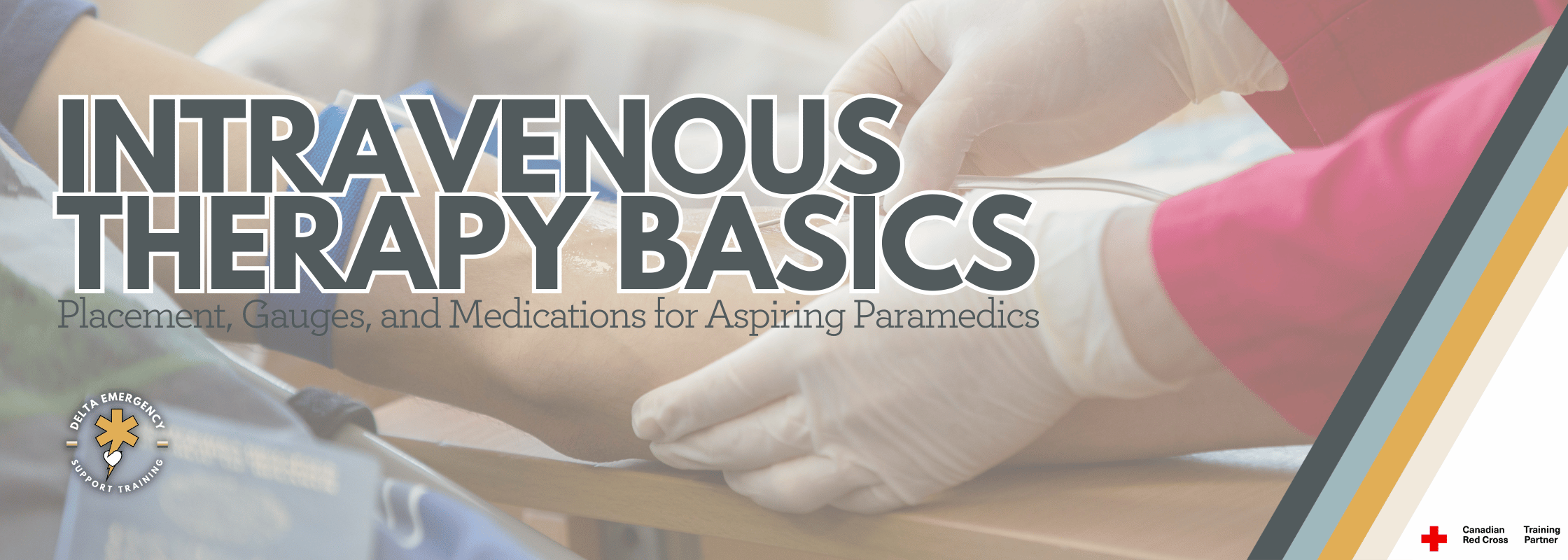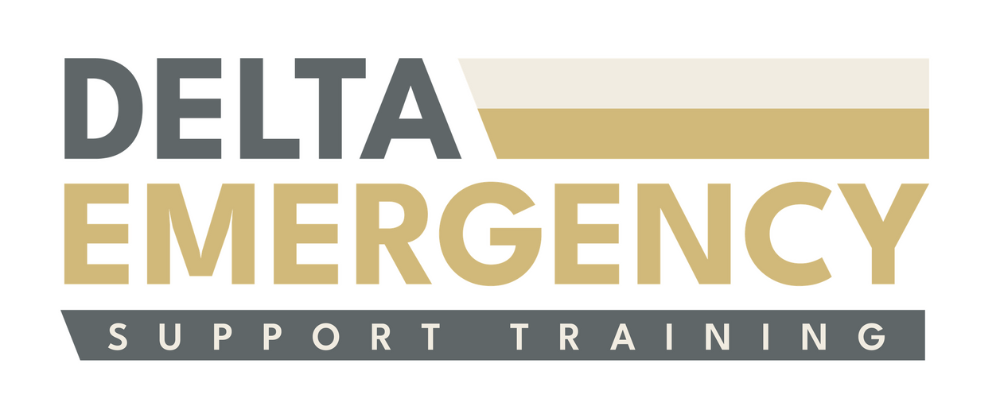Intravenous Therapy for Beginners: Placement, Gauges & Medications
/For many first responders, advancing from Advanced First Aid or Emergency Medical Responder certification to Primary Care Paramedic training is an exciting milestone. It’s where your skills evolve from basic emergency management to a more advanced approach to prehospital medical care.
One of the essential new skills taught in PCP programs is intravenous (IV) therapy, a procedure that allows responders to deliver fluids and medications directly into the bloodstream for rapid, controlled treatment.
While IV initiation is not within the EMR or AFA scope of practice, understanding what it involves — and how it supports patient care — gives you a valuable head start.
What Is IV Therapy?
IV therapy involves inserting a sterile catheter into a patient’s vein to establish direct access to the circulatory system. This line can then be used to deliver fluids, medications, or draw blood samples. IV access is one of the fastest, most reliable ways to stabilize a patient in critical or emergent situations.
When Are IVs Needed?
Paramedics and advanced responders use IVs in a wide range of medical and trauma calls, such as:
Fluid resuscitation: Treating dehydration, burns, or blood loss
Medication delivery: For cardiac, allergic, or diabetic emergencies
Pain or nausea management: In controlled, monitored settings
Cardiac arrest care: To administer life-saving drugs quickly
Trauma management: When oral or intramuscular routes aren’t viable
Learning to Start an IV in PCP School
During PCP training, students learn the anatomy of veins, infection control, and catheterization techniques through classroom instruction, practice labs, and clinical placements. You’ll first work on training arms to master vein palpation, needle handling, and aseptic technique before performing supervised IV starts in clinical settings.
The process includes:
Gathering and preparing sterile equipment
Identifying a suitable vein
Cleansing the site
Inserting the catheter bevel-up
Confirming flashback and advancing the catheter
Securing the line and beginning the infusion
Common IV Insertion Sites (and Why They’re Chosen)
Vein selection is critical. Choosing the right site helps reduce complications, ensures proper flow, and keeps the patient comfortable.
Here are the most common IV entry sites used in prehospital and clinical settings:
1. Dorsal Hand Veins
These include the cephalic, basilic, and dorsal metacarpal veins on the back of the hand.
Pros: Easy to visualize and access; great for smaller catheters.
Cons: More sensitive; can be uncomfortable during movement or fluid administration.
Common Uses: General medication or fluid delivery when other veins are less accessible.
2. Forearm Veins
The cephalic and basilic veins along the forearm are often the first choice for IV starts.
Pros: Straight path, good flow rate, and easier stabilization with tape.
Cons: May roll or collapse if dehydrated; limited space for reattempts.
Common Uses: General medical and trauma patients, fluid resuscitation, medication administration.
3. Antecubital Fossa (Inner Elbow)
The median cubital, cephalic, and basilic veins in the crook of the arm are popular for rapid access.
Pros: Large veins, high flow rates — ideal for trauma or blood draws.
Cons: Restricts arm movement; prone to kinking if patient bends the elbow.
Common Uses: Emergency IV access, large-bore lines, or when rapid administration is needed.
4. External Jugular Vein (Neck)
Used in some prehospital or critical care settings when peripheral access isn’t possible.
Pros: Easy to locate in patients with difficult peripheral veins; high flow.
Cons: Requires skill and patient cooperation; greater risk if improperly managed.
Common Uses: Trauma, shock, cardiac arrest, or situations where arm veins are inaccessible.
5. Lower Extremity Veins (Dorsal Foot or Great Saphenous)
Used mainly when upper extremities are unavailable.
Pros: Alternative access in infants or patients with poor upper body veins.
Cons: Slower flow, higher infection risk, limited mobility.
Common Uses: Pediatrics, last-resort adult IV access.
Understanding IV Gauge Sizes
The gauge of an IV catheter refers to its diameter. Smaller numbers mean larger catheters.
14–16G: For trauma or massive fluid resuscitation
18G: For blood administration or major fluid replacement
20G: General adult use; medications and moderate fluid therapy
22–24G: Pediatrics, elderly, or fragile veins
Gauge choice depends on patient size, vein condition, and the urgency of the situation.
Common IV Medications in Paramedic Practice
While specific drug use depends on provincial protocols, IV therapy often supports:
Normal Saline (0.9% NaCl) – Fluid replacement or line maintenance
Dextrose (D10, D50) – Hypoglycemia management
Epinephrine – Cardiac arrest or anaphylaxis (specific concentrations)
Morphine / Fentanyl – Pain management (under standing orders)
Ondansetron – Nausea control
Nitroglycerin (IV form) – Chest pain management (advanced protocols)
Each medication requires strict dosage control, monitoring, and adherence to medical direction — something you’ll master in paramedic pharmacology.
Why IV Skills Matter
For professional responders, starting an IV isn’t just about inserting a catheter — it’s about stabilizing patients efficiently, safely, and confidently. In trauma, shock, or medical crises, IV access can mean the difference between life and death.
If you’re currently an EMR or AFA graduate considering the PCP path, familiarizing yourself with IV principles now will make your transition smoother and your training easier.
Final Thoughts
Learning to start an IV marks a major step forward in your responder journey. Though outside the AFA and EMR scope, it’s a skill that defines advanced prehospital care. As you move toward your Primary Care Paramedic program, understanding IV therapy — from vein anatomy to gauge selection — gives you a solid foundation for success.




